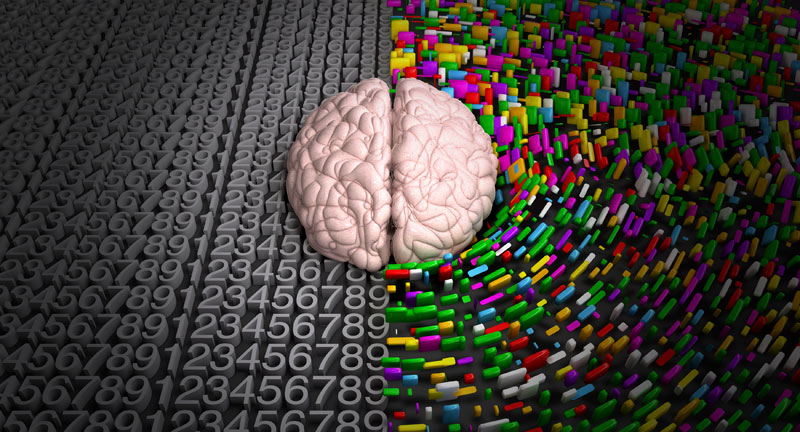Staying focused while you’re learning can be a challenge, especially in today’s remote environment but it’s important for memory and recall.
Many of us have shared the experience of spending 20 minutes pouring over information on a page just to walk away and realize we haven’t retained any of it.
These kinds of experiences can be frustrating, but some tricks can help you speed up learning. These practical hacks are based on science and allow you to use your brain more efficiently as you’re learning.
1. Build Links and Connections
When we learn something new, we are attempting to make links between neurons in our long-term memory. When you are sitting and glancing at a page, are you creating substantial links in your long-term memory? Absolutely not. You may be making a few links, but the best way to strengthen them is by connecting this new information to something you already know.
For me, this is a very visual process. If I’m trying to remember the word duck is “pato” in Spanish, I imagine a duck in a pot-o water. By relating a word in one language to another, it helps me make a strong connection.
Similarly, a friend of mine has a hard time learning new names but can remember information about talk shows very easily. When he meets new people, he connects their names to talk shows he loves, which helps him remember those names. Connecting new information to something you already know will help you learn it faster.
2. Practice Recalling Information
While building connections to your long-term memory is essential, you also have to strengthen them. The best way to get information into your long-term memory is by checking to see if you have it there.
Flashcards are an invaluable tool for this. For example, if you’re learning a vocabulary word, put it on a flashcard. Then, flip it over and see if you can recall it from your mind. When you do this, you are asking yourself, “Are those links there in my long-term memory?”
Also, if you’re reading a page, you don’t want to just highlight and underline because the motion of your hand is only fooling yourself into thinking you’re learning. Instead, read the page and then look away and see if you can recall the key ideas.
3. Take Advantage of Spaced Repetition
Just like some people are taller and some people are shorter, people also differ in making long-term memory links. For some people, it’s simple, and for others, it takes more time and effort. Personally, I don’t have a very good long-term memory, so I have to go over something many times to remember it, which makes spaced repetition invaluable to me.
With spaced repetition, you’ll go over something 5-10 times before you put it away, and then you’ll go over it again a few more times the next day. This requires you to practice recalling information over a longer time, strengthening those connections in your memory.
If you want to remember something for a year, you probably want to repeat it until you’ve got it down pretty well. The goal is to call it back to mind just as you’re about to forget it, so maybe you would practice recalling it every few weeks or so. This kind of spaced repetition is an excellent tactic for ensuring you’ve got that information stored in your long-term memory.
4. Use the Pomodoro Technique to Stay Focused
Personally, I know how hard it can be to stay focused, especially when many of us are working and learning from home where there are countless distractions available, which is why I love the Pomodoro technique. There’s no multitasking with this technique, so you have to turn off all distractions. With the Pomodoro, you set a timer for 25 minutes and focus intently on one thing during that time. After the 25 minutes are up, you’ll want to reward yourself with about a five-minute break.
The reward part is vital because you aren’t only learning during those 25 minutes when you’re focusing, but also when you take a complete break and get your focus off of that. This gives your hippocampus time to offload the information into the neocortex, making the break an efficient use of your time. To maximize the break’s effectiveness, go for a short walk or close your eyes and do nothing.
5. Be Consistent In How You Learn
Consistency is vital to helping you reach your learning goals. To stay consistent and make something a habit, give yourself a certain and doable amount of time for it each day. Whether it’s 15 minutes or an hour, be sure to set time aside to dedicate to learning a specific skill or topic. You want to make this a realistic goal because making it too long could make it unachievable.
Whether you use a calendar or something else, be sure to track each day you complete your task. The comedian Jerry Seinfeld would use a calendar and mark each day he created a new joke to hold himself accountable. Your goal should be to put some time into learning each day, as it’s this gradual, day-by-day process that leads to significant progress. Putting in time and effort over a long period is what makes a difference.
These are just a few tips I recommend to help you efficiently use your time and maximize your learning. You can explore other valuable hacks in my course Learning How to Learn on Coursera.
- Learning How To Learn: 5 Tips For Improving Memory And Recall - March 12, 2021





 This website uses cookies to improve your web experience.
This website uses cookies to improve your web experience.